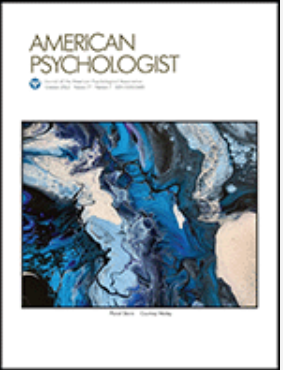The prevalence of direct replication articles in top-ranking psychology journals.
IF 12.3
1区 心理学
Q1 PSYCHOLOGY, MULTIDISCIPLINARY
引用次数: 0
Abstract
Despite lip service about replication being a cornerstone of science, replications have historically received little real estate in the published literature. Following psychology's recent replication crisis, we assessed the prevalence of one type of replication contribution: direct replication articles-articles where a direct or close replication of a previously published study is one of the main contributions of the article. This prevalence provides one indicator of how much the field values and incentivizes this type of self-correction. We used a keyword search combined with manual checking to identify direct replication articles that were published from 2010 to 2021 in the 100 highest impact psychology journals. In total, only 0.2% of articles (169 articles out of 84,834) were direct replication articles. There was a small suggestive increase in the prevalence of direct replication articles over time. Additionally, journals with a stated policy of considering replication submissions (31% of journals) were 7.85 times more likely to publish direct replication articles than those without such a policy. Fifty-four out of 88 journals did not publish any direct replication articles in the 11 years surveyed. Our estimate is not the same as the prevalence of direct replication studies overall (direct replication results can be shared in many ways other than as direct replication articles in top journals). Ultimately, direct replication articles are still rare, with a few journals doing most of the heavy lifting. Based on these findings, we argue it would be premature to declare that psychology's replication crisis is over. (PsycInfo Database Record (c) 2024 APA, all rights reserved).顶级心理学期刊中直接复制文章的普遍性。
尽管人们口口声声说复制是科学的基石,但在已发表的文献中,复制历来鲜有着落。在心理学最近的复制危机之后,我们评估了一种复制贡献的普遍程度:直接复制文章--直接或近似复制以前发表的研究是文章的主要贡献之一。这种普遍性提供了一个指标,说明该领域有多重视和鼓励这种类型的自我纠正。我们使用关键词搜索结合人工检查的方法,找出了 2010 年至 2021 年期间在 100 种影响力最大的心理学期刊上发表的直接复制文章。总共只有 0.2% 的文章(84,834 篇文章中的 169 篇)是直接复制文章。随着时间的推移,直接复制文章的比例略有增加。此外,有考虑复制投稿政策的期刊(31%)发表直接复制文章的可能性是无此政策期刊的 7.85 倍。在调查的 11 年中,88 种期刊中有 54 种未发表任何直接复制文章。我们的估计值与直接复制研究的总体流行率不同(除了在顶级期刊上发表直接复制文章外,还可以通过多种方式分享直接复制结果)。归根结底,直接复制文章仍然很少见,大部分工作都是由少数期刊完成的。基于这些发现,我们认为,现在就宣布心理学的复制危机已经结束还为时过早。(PsycInfo 数据库记录 (c) 2024 APA,保留所有权利)。
本文章由计算机程序翻译,如有差异,请以英文原文为准。
求助全文
约1分钟内获得全文
求助全文
来源期刊

American Psychologist
PSYCHOLOGY, MULTIDISCIPLINARY-
CiteScore
18.50
自引率
1.20%
发文量
145
期刊介绍:
Established in 1946, American Psychologist® is the flagship peer-reviewed scholarly journal of the American Psychological Association. It publishes high-impact papers of broad interest, including empirical reports, meta-analyses, and scholarly reviews, covering psychological science, practice, education, and policy. Articles often address issues of national and international significance within the field of psychology and its relationship to society. Published in an accessible style, contributions in American Psychologist are designed to be understood by both psychologists and the general public.
 求助内容:
求助内容: 应助结果提醒方式:
应助结果提醒方式:


